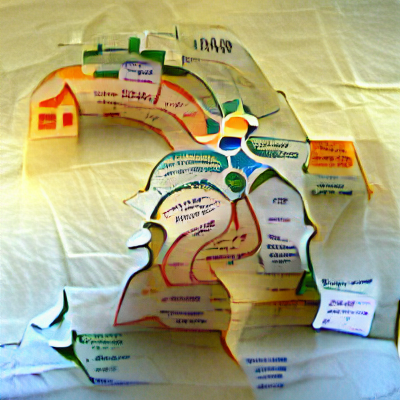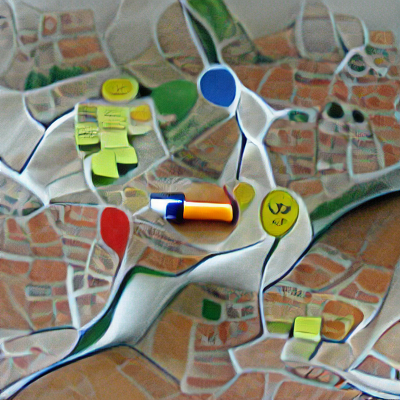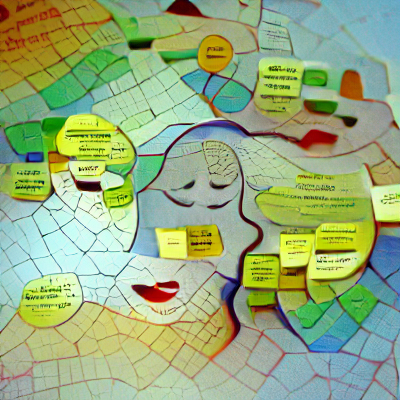Research
Research into (Mental) Health Mapping is inherently interdisciplinary, sitting at the intersection of several scientific fields. Since our group was established in 2022, we have published across leading machine learning venues as well as journals in psychiatry and neuroscience. For an overview, see our Selected Publications.
Foundations of Mental Health Mapping
 What constitutes a disorder and what is healthy or normative, especially if the disorder is a consequence of unwholesome mental states, can be unclear. We explore the foundations of what constitutes health, disorder, or disease and explore questions such as: What is healthy? What is the right reference group to compare disease with? Can we utilize systematic explorations of the mind as tools to understand it? In the long run, this work contributes to the theoretical foundation of mental health mapping, incorporating first and third person perspectives. We work together with philosophers, clinicians and patients who provide insights into clinical practice and inform our science in theoretical and practical ways.
What constitutes a disorder and what is healthy or normative, especially if the disorder is a consequence of unwholesome mental states, can be unclear. We explore the foundations of what constitutes health, disorder, or disease and explore questions such as: What is healthy? What is the right reference group to compare disease with? Can we utilize systematic explorations of the mind as tools to understand it? In the long run, this work contributes to the theoretical foundation of mental health mapping, incorporating first and third person perspectives. We work together with philosophers, clinicians and patients who provide insights into clinical practice and inform our science in theoretical and practical ways.
Structures of Mental Health Mapping
 Mental disorders are heritable (passed down through generations in families), comorbid, and heterogenous. Sometimes an impaired biology in a single individual is the structure underlying illness, in other cases the psychodynamics between individuals, groups or different parts of society as well as environmental stressors. We are guided by questions such as what makes one sibling with a disorder different from another who is healthy? What are the interpersonal factors contributing to mental health in families? When does it make sense to treat a group of individuals instead of the individual patient? What is the role of society and which policies, and treatments are improving our mental health? We work on large scale studies that contain necessary data for answering these questions and collaborate with scientists and clinicians.
Mental disorders are heritable (passed down through generations in families), comorbid, and heterogenous. Sometimes an impaired biology in a single individual is the structure underlying illness, in other cases the psychodynamics between individuals, groups or different parts of society as well as environmental stressors. We are guided by questions such as what makes one sibling with a disorder different from another who is healthy? What are the interpersonal factors contributing to mental health in families? When does it make sense to treat a group of individuals instead of the individual patient? What is the role of society and which policies, and treatments are improving our mental health? We work on large scale studies that contain necessary data for answering these questions and collaborate with scientists and clinicians.
Markers for Mental Health Mapping
 The factors underlying mental health or disorder are not well understood and a complex web of biological and non-biological variables interact producing symptoms in any given individual. This is one of the reasons why we have limited insights into the markers linked to illness. Through multimodal approaches we aim to detect hidden factors underlying illness and are guided by questions such as what makes one person different from another when diagnosed with the same disorder? How can we uncover predictive markers for illness? Which data modalities are informative for which disorder or disease process? We work together with scientists and clinicians interested in different disorders and diseases.
The factors underlying mental health or disorder are not well understood and a complex web of biological and non-biological variables interact producing symptoms in any given individual. This is one of the reasons why we have limited insights into the markers linked to illness. Through multimodal approaches we aim to detect hidden factors underlying illness and are guided by questions such as what makes one person different from another when diagnosed with the same disorder? How can we uncover predictive markers for illness? Which data modalities are informative for which disorder or disease process? We work together with scientists and clinicians interested in different disorders and diseases.
Models for Mental Health Mapping
 Most of the research directions described above involve machine learning tools. Therefore, we apply and develop these approaches for large scale imaging, electrophysiological, genetic, sensor, cognitive and behavioural data. Our methods are adapted to high dimensional data and often very unreliable labels. Our work is guided by questions such as how can we utilize machine learning across modalities? What methods are best to parse heterogeneity? Which longitudinal modelling procedures are suited to deal with the properties of the underlying data structures? How can we increase the interpretability of our models and ultimately how can we take machine learning from the lab to clinical practice? We work together with scientists working on innovative data acquisition methods and are interested in method development (e.g., machine learning, statistics) as well as in establishing best practices in curating complex, large datasets required for our research agenda.
Most of the research directions described above involve machine learning tools. Therefore, we apply and develop these approaches for large scale imaging, electrophysiological, genetic, sensor, cognitive and behavioural data. Our methods are adapted to high dimensional data and often very unreliable labels. Our work is guided by questions such as how can we utilize machine learning across modalities? What methods are best to parse heterogeneity? Which longitudinal modelling procedures are suited to deal with the properties of the underlying data structures? How can we increase the interpretability of our models and ultimately how can we take machine learning from the lab to clinical practice? We work together with scientists working on innovative data acquisition methods and are interested in method development (e.g., machine learning, statistics) as well as in establishing best practices in curating complex, large datasets required for our research agenda.
P.s.: In many cases, simple regression models perform just as well as methods based on Artificial Intelligence for brain readouts.
